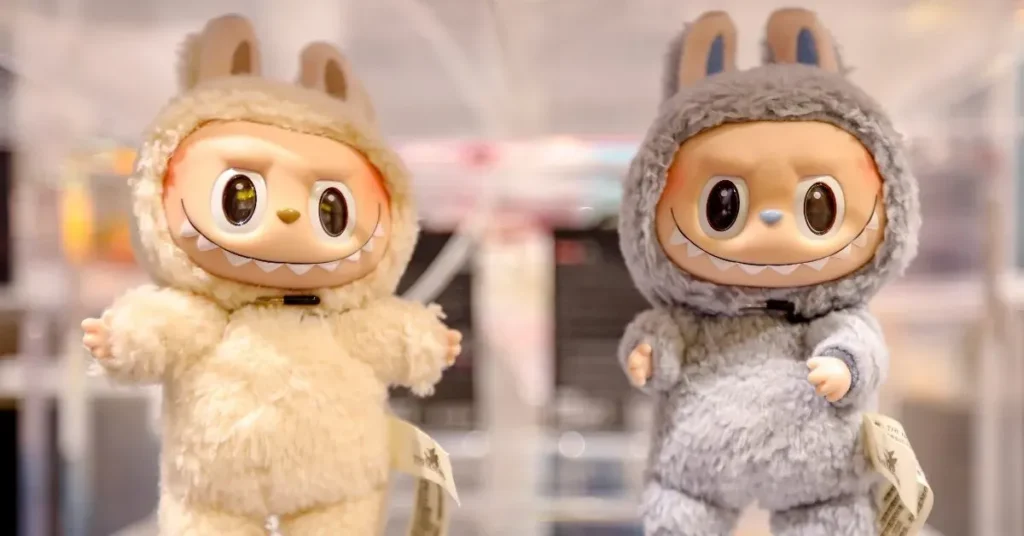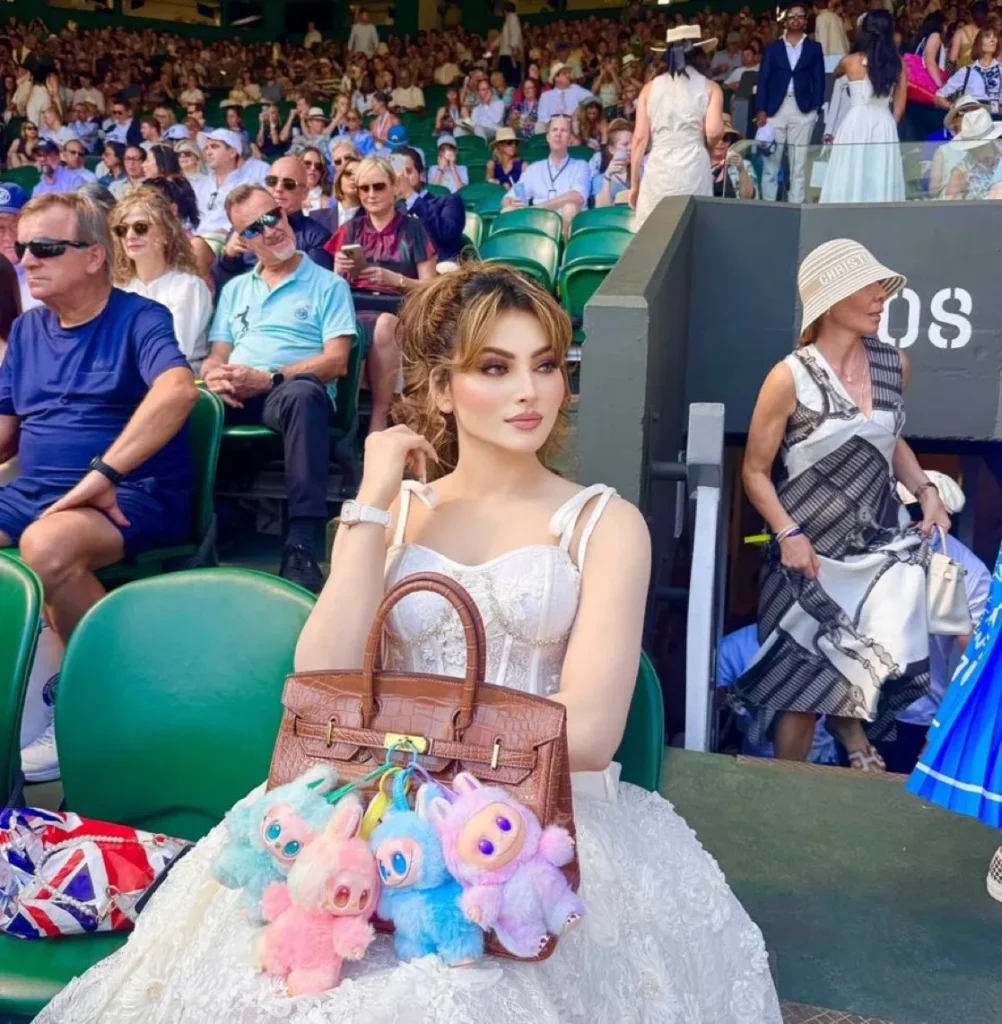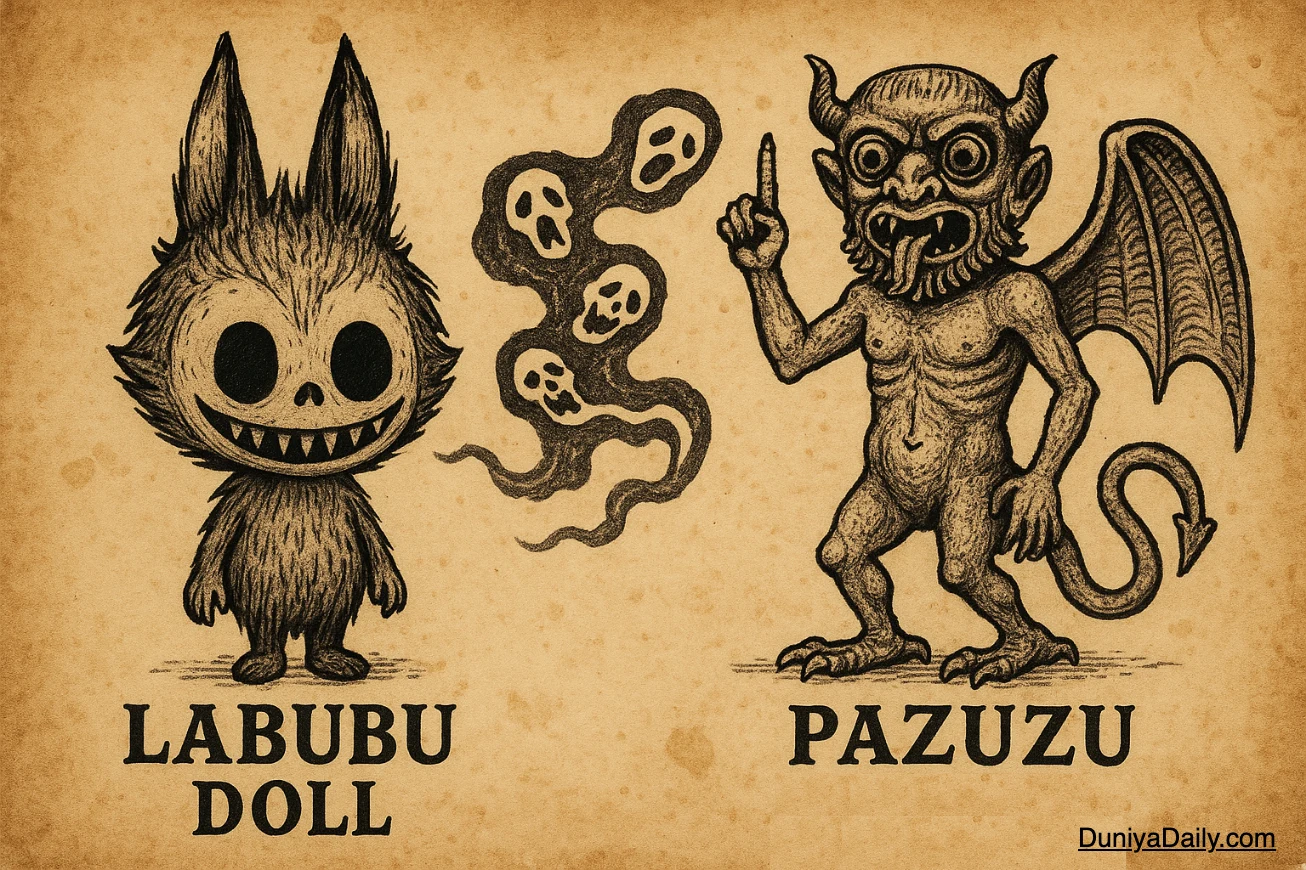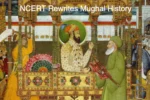Labubu dolls are part of “The Monsters” series, created by Hong Kong-based artist Kasing Lung in 2015. Their popularity exploded after a collaboration with Chinese toy giant Pop Mart in 2019, especially with the “blind box” sales strategy, where buyers don’t know which specific doll they’ll get until they open it. They’re cute, they’re quirky, and they’ve taken the world by storm, adorning handbags of celebrities like Rihanna and BLACKPINK’s Lisa.
But lately, a chilling whisper has spread across the internet: are Labubu dolls haunted? Viral videos and social media posts, amplified by an unexpected link to a classic horror film, have pushed these collectible toys from quirky fashion statements into the realm of modern urban legend.
Table of Contents
Here’s a breakdown of the alleged haunted stories and the truth behind them:
The Core of the “Haunted” Claim: The Pazuzu Connection
The vast majority of “haunted” stories and fears surrounding Labubu dolls stem from an unfounded, viral conspiracy theory linking them to Pazuzu, an ancient Mesopotamian demon.
- The “Simpsons” Connection: The theory gained immense traction from a resurfaced clip from a 2017 “The Simpsons: Treehouse of Horror” episode. In this episode, a character accidentally brings home a statue of Pazuzu, which then possesses Baby Maggie, causing chaos. Social media users, particularly on TikTok and Instagram, drew a completely false parallel between the fictional demon in The Simpsons and the Labubu doll’s “mischievous” appearance, suggesting a “prediction.”
- AI-Generated Images: Some users even created and spread AI-generated images that falsely depicted a strong visual resemblance between Labubu and Pazuzu, further fueling the panic.

Alleged Haunted Stories and Claims Circulating Online:
Following the Pazuzu misinformation, various anecdotal “haunted” stories began circulating, particularly on social media. These include:
- Paranormal Activity: Claims of dolls falling off shelves without being touched, flickering lights, unexplained sounds, and items moving on their own after a Labubu doll was brought into a home.
- Nightmares and Sleep Paralysis: Some owners reported experiencing terrifying nightmares or episodes of sleep paralysis, which they attributed to the presence of the doll.
- Behavioral Changes: Stories of children talking to the dolls as if they were alive, or pets behaving anxiously, barking, or growling at the dolls.
- Changing Expressions: Some users claimed their Labubu doll’s expression subtly changed overnight.
- Bad Omens/Misfortune: In some instances, people, including an Indian actress Archana Gautam, have shared stories of personal misfortunes (like a broken engagement or a family member’s death) occurring shortly after acquiring a Labubu doll, leading them to believe the doll brought bad luck or was cursed.
- “Demonic Energy”: Some self-proclaimed spiritual influencers and religious communities, especially certain Christian groups, have warned followers to avoid the dolls, claiming they radiate “demonic energy” due to their “pagan” or non-Christian folklore origins.

The Reality: Debunking the Haunted Claims
It’s crucial to understand that there is no credible evidence, factual basis, or official information to support any of these haunted stories or the demonic links.
- Creator’s Intent: Kasing Lung, the artist, has explicitly stated that Labubu and his “The Monsters” series are inspired by Nordic folklore and European fairy tales, depicting mischievous yet kind-hearted “monster elves.” There is no dark or occult origin in his artistic vision.
- Fact-Checking: Reputable fact-checking organizations (like Snopes.com) have thoroughly debunked the Pazuzu connection, confirming that there is no resemblance or historical link between Labubu and the demon. Pazuzu’s actual mythological depiction is vastly different from Labubu’s design.
- Psychological Factors: The perception of “haunted” events can often be attributed to:
- Confirmation Bias: Once a person believes something is haunted, they tend to notice and interpret everyday occurrences (a creak, a shadow, a misplacement) as confirmation of their belief.
- Suggestibility: Viral social media content can heavily influence susceptible individuals, leading them to experience similar perceived phenomena.
- Pareidolia: The tendency to perceive familiar patterns (like a changing expression) in random or ambiguous stimuli.
- Anxiety/Fear: The intense focus on the “demonic” aspect can induce genuine anxiety, which can manifest as disturbed sleep or heightened awareness of normal household sounds.
- Viral Hysteria and Clickbait: Many of the videos and claims are part of a larger internet phenomenon, where sensational stories generate clicks, views, and engagement. Some individuals even filmed themselves burning their dolls in “cleansing rituals” for viral content.
- Cultural Misinterpretation: The unique “ugly-cute” aesthetic, while charming to many, might be unsettling to those unfamiliar with the art toy genre, leading to misinterpretations.
While the “haunted” stories have led to real panic for some (with reports of dolls being burned or even banned in specific localities like Erbil, Iraq), they are widely considered to be a product of social media hysteria and misinformation rather than any genuine paranormal activity or demonic association with the Labubu dolls themselves.
What would be your reaction if you find a Labubu doll sitting next to you?
Keep following Duniya Daily for more such interesting news and updates!










